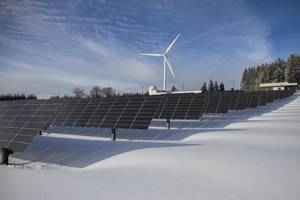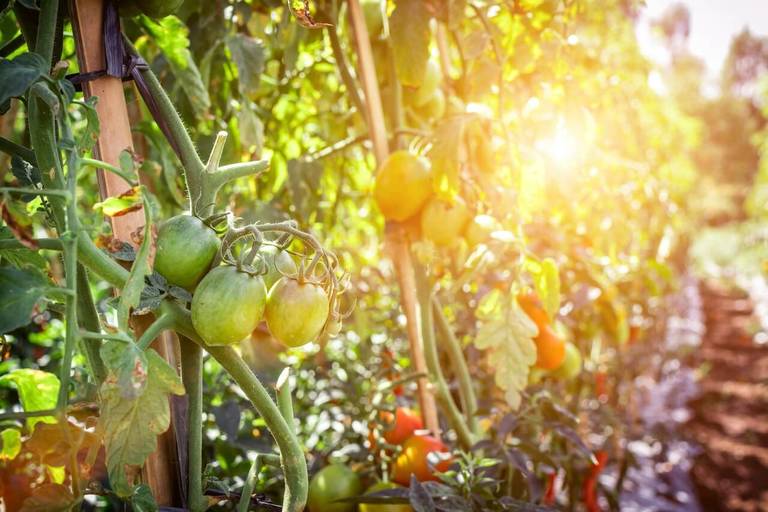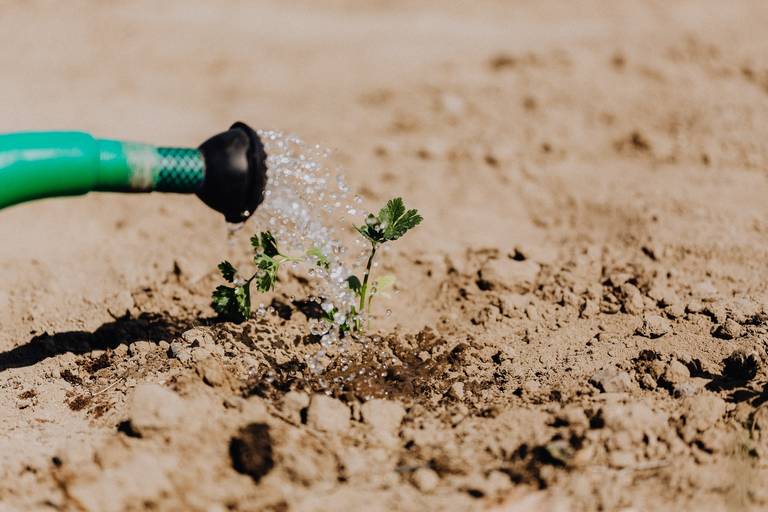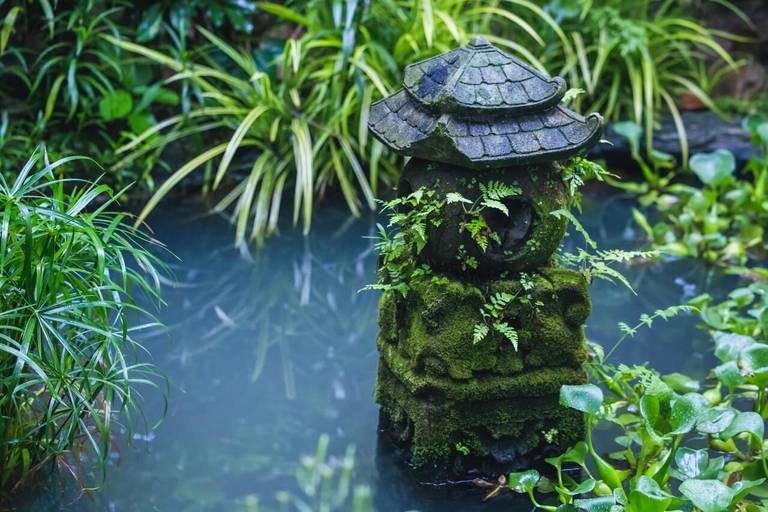Growing Vegetables in a Kitchen Garden
A kitchen garden has a special charm all its own. The satisfaction of growing vegetables for your own use, together with the cost-saving factor, is an unbeatable duo.
And if you add a few decorative herbs to the mix, your kitchen garden will look as good as your flower garden.
Growing vegetables is not only a rewarding hobby. Once you've tasted that unique flavor, you would never want to eat store-bought green groceries again.
Pumpkin and squash are two vegetables that are easy to grow and don't mind lots of weeds and grass. Still, in general, a kitchen garden can be pretty labor-intensive.
See also: Growing unusual fruit and vegetables
How to Start Growing Vegetables
The best way to harvest bumper crops when growing vegetables is by lavishing lots of TLC and attention on them. However, composting can reduce the workload considerably.
First, spread all the lawn clippings to get over the garden to minimize weed growth and retain moisture.
Ask the neighbors to save you their clippings too. They'll probably be glad to get rid of them. You could even promise them a few juicy tomatoes in return.
A shredder will be an excellent investment for any garden, not just growing vegetables. You can get instant mulch for the garden from old vegetable plants and prunings. The main thing to remember is not to place the composting material to touch the stems of vegetables, or stem rot can occur.
Suppose you start growing vegetables early in the season. In that case, you can produce bountiful crop weeks ahead of the usual time. Imagine having a homegrown harvest at a time when those fruits and vegetables are costly in the shops.
The only thing you must watch for is the late frost that can burn young plants. Placing an empty can or milk container over them in the evening and removing it the following day can protect them from frost and snails. Tomatoes and cucumbers are especially suited to this idea. However, it will be more challenging with beans because you have more of those planted at one time.
Some seeds like beans won't germinate until the soil is at the right temperature. So if you want to start them early, plant them in egg cartons and keep them in a warm, sunny spot until all danger from frost is over. Then cut it into sections and plant container and all into the garden.
The roots will grow through the cardboard into the soil beyond. You could even make a glass-covered box out of an old window to keep them in. It will be nice and warm there.
Growing vegetables can create an eyesore if you don't plan ahead. Make your vegetable garden as visually attractive as possible by careful planning. You can choose more decorative herbs and vegetables and plant them in your flowerbeds if space is at a premium.
The red-flowering runner bean is stunningly grown over a trellis, while many herbs have attractive flowers and leaves. Chicory has exquisite blue flowers. And a passionfruit vine will happily hide an unsightly fence or shed while providing delicious fruit.
Remember that even though many herbs are leafy and lacking flowers, they will provide greenery in your garden, even in the winter. Just exercise a little thought about where to place them, think about what your garden will look like in each season, and incorporate this into your plan.
Most herbs will do very well when planted in containers, which is a great option even if you don't have much space in your garden. You can grow tall herbs at the back of a traditional flower garden.
Low-growing herbs make excellent flower garden borders. Some herbs like mint will run riot in the garden, so they must be kept in pots. But you can bury these pots in the garden to create a cohesive look.
Growing vegetables need a sunny site to do well. If you are growing fruit trees, make sure they don't cast a shadow over the vegetables and herbs. Fruit trees are better off on the lawn than the garden because their roots steal nutrients and moisture from less aggressive plants.
The standard method of growing vegetables is in regimented rows. However, if they are kept adequately weeded, this can still look good. Even if you don't have much space, you can still produce an extensive range of vegetables in containers, e.g., peas and potatoes. Some vegetables are attractive enough to be planted amongst the flowers - but remember that you will have gaps once the vegetables are harvested.
Nearly all fruit trees prefer a sunny site. However, poor crops will result if frost damages the blossom on pear and apple trees. Pears are particularly vulnerable because they tend to flower earlier than apple trees. Citrus fruits are the hardiest, but the roots do run a long way to find water, so unless you have plenty of it, keep them away from your veges.
If space is limited, but you still want to try growing fruit, then try planting trained fruit trees such as cordons, espaliers, and fans against a wall or fence. They can look very decorative and take up very little room.
Small apple tree varieties like 'ballerina' can grow in pots on the patio. You can grow strawberries in containers. There are even certain varieties of cordon-trained pears and apples that you can grow against a garden fence. Berries don't take up much room on a trellis or fence either, though you might have to fight the birds for them.
Final Thoughts
With some planning, thought, and imagination, you can have the joy of growing vegetables and harvesting food for your kitchen table in your kitchen garden. This is true no matter how small the plot is.
In addition, growing vegetables may help keep your children healthier. They will delight in picking and eating produce like cherry tomatoes, peas, and beans straight from the garden.





